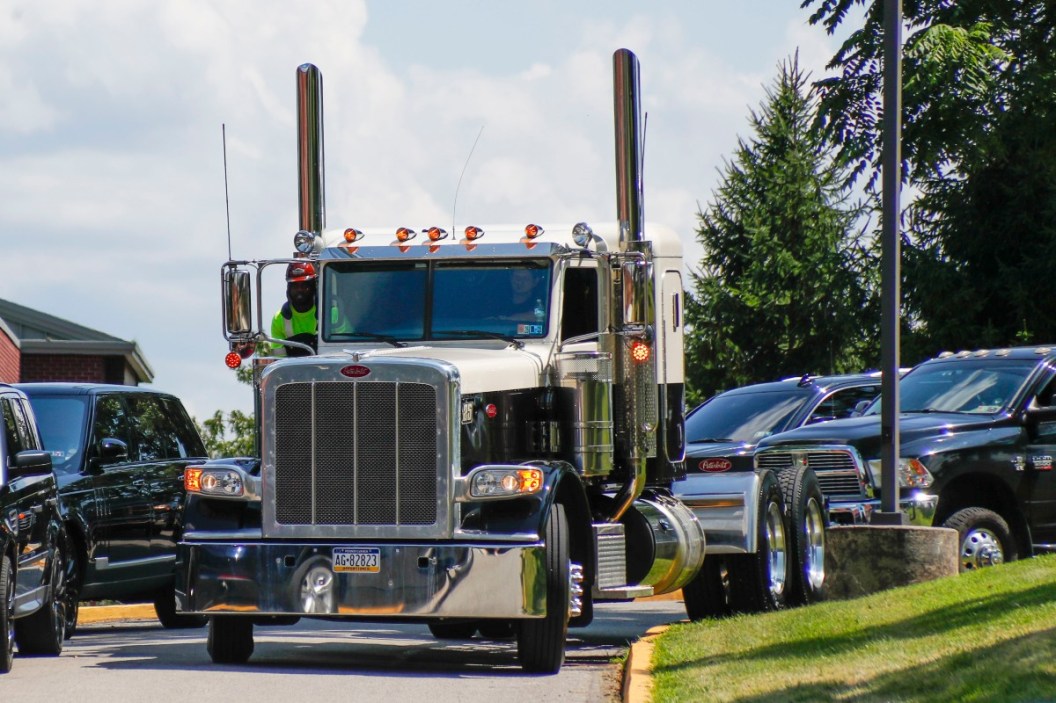One of the many things that long-haul commercial truck drivers are required to do is be aware of their gross vehicle weight while traveling. These big rigs can get pretty heavy, but there are weight limits on the roads, and that's why you'll consistently see different weigh stations along the highway. DOT utilizes these stations to ensure each trucker is abiding by the legal weight limits.
Unless you work as a CDL driver for a trucking company, or your job somehow revolves around tractor-trailers, it's unlikely to ever see that number that appears on the scales. It's significant though, and that's why we're going to look at the average weight of a semi truck, and the maximum weight that a semi is legally allowed to have on the roads in the United States.
How Much Does a Semi Truck Weigh?
Overall weight of the truck is largely dependent on what that semi is hauling. That's why, whether you've got a flatbed, fuel tank, car hauler, or reefer, you cannot surpass the overall legal weight limits without a special permit.
To simplify things, consider a regular semi-tractor without a trailer. This truck is going to weigh in the realm of 15,000-25,000 pounds just on its own. This can vary depending on the specific model, or if it's a day cab or sleeper cab. When you hook up an empty trailer, that weight increases to around 35,000 pounds. The real question is just how much does an 18-wheeler weigh with a loaded trailer?
The total weight of a loaded semi truck cannot be greater than 80,000 pounds. That means they have around 45,000 pounds of cargo they are able to stuff inside. If they weigh higher than that at the scales, that 18-wheeler will be pulled over and parked until it can be unloaded, or the proper permits are obtained. Axle weights over this limit can potentially worsen road conditions, and that's the main reason these laws are in place.
Truck Weight Classification
DOT uses a truck classification system largely based on the gross vehicle weight rating (GVWR). There are eight total classes that trucks are grouped into, and you've also got three categories: light trucks, medium trucks, and heavy-duty trucks. These classes help regulate the safety, commercial intention, and registration of the vehicle.
Light trucks will include class 1-3 vehicles. These are typically non-commercial, and more so include your average car or pickup truck. The biggest truck you'll find in this category will be a class 3 box truck or large cargo van. However, weights should not exceed 14,000 pounds.
Medium trucks involve the next tier, class 4-6 vehicles. Most medium trucks will be used commercially, and the classes cover such vehicles as F-450 trucks, passenger vehicles, box trucks, bucket trucks, beverage/rack trucks, and school buses, among many others. The maximum weight allowed for a medium class 6 truck is 26,000 pounds.
Heavy trucks are the heaviest of them all, and this categorization includes classes 7 and 8. Trucks that would fall into this category would be dump trucks, garbage trucks, cement trucks, and, of course, semi-trucks. The legal weight limit mentioned above was 80,000 pounds, but with special permits, these trucks can hit some pretty ridiculous overall weights.
Products featured on Alt_driver are independently selected by our editors. However, when you buy something through our links, we may earn a commission.
This post was originally published on April 20, 2021.
